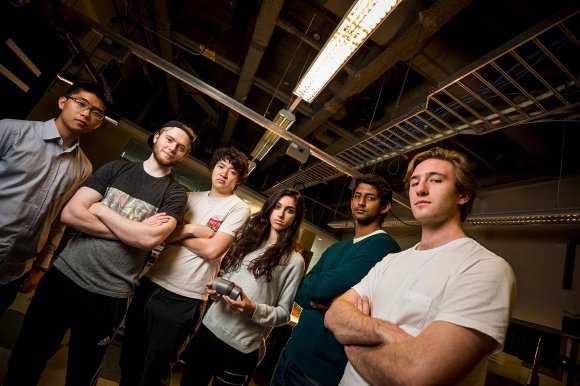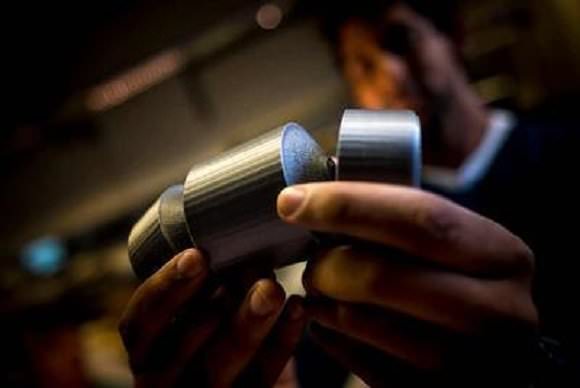When human beings colonize other Solar bodies, how will they see to their basic needs? Already, research has been performed to determine where colonists would be able to procure water, how they might grow their own food, and where and how they might live. But what about the finer things in life, the things that make all the hard labor and sacrifice worth it? In case it’s not clear yet, I’m talking about beer!
If and when Lunar or Martian colonies become a reality, will the colonists be able to brew and enjoy their own beer? Or will imported beer be the only thing available to them? That’s the question a team of bioengineering students from the University of California San Diego sought to answer. As finalists who competed in the Lab2Moon competition being held by TeamIndus, they combined their love of beer with their love of space exploration.
As the only Indian team in the Google Lunar XPRIZE competition, TeamIndus has been working on a privately-funded spacecraft to send to the Moon. Once complete, TeamIndus hopes to conduct a soft landing on the surface of the Moon later this year. Their accomplishments so far include being one of the five teams selected to compete in the Milestone Prizes and successfully winning the $1 million Milestone Prize for their landing technology.

The Lab2Moon competition was held in order to see a youth experiment brought to the Moon aboard that spacecraft. And while their experiment did not take home the top prize, their final prototype will still be going into space. Thanks to Synergy Moon, who won an XPrize verified launch contract, the experiment will be launched aboard a rocket this December (the planned launch date is currently Dec. 28th, 2017).
For the sake of their experiment, the UC San Diego team – all undergraduates with the Jacobs School of Engineering – sought to test if yeast would be viable in a Lunar environment. As the key ingredient in the production of beer (and many other beneficial things), their experiment sought to determine if Lunar colonists will be capable of becoming their own brewmasters.
Their team name is “Original Gravity”, a delicious pun that alludes to both brewing and the Lunar conditions they are investigating. In the case of brewing, Original Gravity (OG) is the measure of sugars dissolved in the wort (the beer before it is fermented). In the case of the Moon, it refers to the fact that Lunar gravity is just 0.165 times that of Earth’s, which could affect the behavior of the microorganisms like yeast.
As Neeki Ashari, a fifth-year bioengineering student and the team’s PR & Operations Lead, said in a University press release:
“The idea started out with a few laughs amongst a group of friends. We all appreciate the craft of beer, and some of us own our own home-brewing kits. When we heard that there was an opportunity to design an experiment that would go up on India’s moonlander, we thought we could combine our hobby with the competition by focusing on the viability of yeast in outer space.”
With sponsorship from the Omega Yeast Labs, the team designed a unique brewing system. First, all the prep work that precedes the adding of yeast – for instance, combining malted barley and water to create wort – would take place on Earth. Second, the team plans to combine the “fermentation” and “carbonation” phases – which are usually done separately – into one phase.
This process makes for a system that is much easier to design, eliminates the need for releasing accumulated CO² (which can be a hazard) and also prevents the possibility of over-pressurization if anything in the system fails. Last, the testing of fermentation will not rely on density measurements that rely on gravity (as brewers do on Earth), using pressure to determine sugar content instead.
As Han Ling, a fifth-year bioengineering undergraduate student and the team’s leader, explained, “Converting the pressure buildup to fermentation progress is straightforward, as long as volume and original gravity – specific gravity before fermentation, hence our name – are known prior to the experiment.” Measuring roughly as wide as a soda can, their system is able to ferment yeast and worst to create beer, even under Lunar conditions.
In addition to being the first-ever experiment to brew beer in space, their experiment will also be the first to craft beer using such a small apparatus. A Srivaths Kaylan, a fourth-year nano-engineering major and the team’s mechanical lead, indicated:
“Our canister is designed based on actual fermenters. It contains three compartments—the top will be filled with the unfermented beer, and the second will contain the yeast. When the rover lands on the moon with our experiment, a valve will open between the two compartments, allowing the two to mix. When the yeast has done it’s job, a second valve opens and the yeast sink to the bottom and separate from the now fermented beer.”
Looking to the future, Ashari and the team hope to see their experiment adapted for use on other planets – like Mars! Other proposed experiments that were entered in the competition included methods for photosynthesis to producing electricity in a Lunar environment. Beyond making beer, understanding how yeast will behave in a Lunar environment is also important in the development of pharmaceuticals and yeast-containing foods, such as bread.
It certainly is interesting to think about what kind of beers could be produced in an extra-terrestrial environment, isn’t it? Will future generations of brewers have the option of using locally-grown barley, wheat, hops, and yeast cultures to craft their beer? Will the use of Lunar or Martian water have an effect on the taste of the beer?
And then there’s the matter of names and styles. Will Lunar brewers create a Dark Side of the Moon Stout? Will the people of Mars specialize in Red Ales? Like I said, interesting!
Further Reading: UC San Diego, ABC 10News



